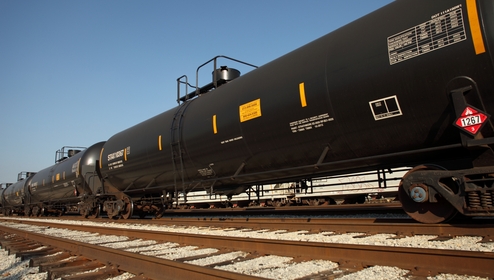
Rail 101
Cost-efficient and environmentally friendly, rail is a smart way to move freight. Rail is approximately four times more energy-efficient than other transportation methods — one CSX train can transport a ton of freight nearly 450 miles on a single gallon of fuel.
Rail Network
When it comes to the business of shipping, CSX can move you in the right direction. In fact, you don't even have to be located on a railroad track for us to help you. With 21,000 miles of track, access to 70 ports and nationwide transloading and distribution services, we've got what it takes to move your business.
CSX serves:
- 23 states, Washington, D.C. and the Canadian provinces of Ontario and Quebec.
- Major population centers east of the Mississippi River, including New York, Philadelphia and Boston in the Northeast and mid-Atlantic; the Southeast markets of Atlanta, Miami and New Orleans; and the Midwestern cities of St. Louis, Memphis and Chicago.
- More than 70 ocean, river and lake ports along the Atlantic and Gulf coasts, the Mississippi River, the Great Lakes and the St. Lawrence Seaway.
On our premier route between the Midwest and Northeast features minimal grade and is all double track to allow for more efficient transport to East Coast refineries and terminals.
Rail Equipment
Locomotives
CSX operates a powerful fleet of more than 4,000 diesel electric locomotives. Over the last decade, we have updated our locomotive fleet to include low-emission locomotives. Other innovative improvements include the addition of friction modifiers and idle-reducing technologies to our locomotives, a significant step that has increased fuel savings and reduced greenhouse gas emissions.
Tank Cars
Tank cars are very specialized equipment for the shipment of bulk liquids. They vary in size and carry all types of liquids, from corn syrup to chemicals. Most tank cars are owned by the customers who use them for rail shipments or by third-party leasing companies. Cars are supplied with various linings, loading and unloading fittings, safety appliances and other characteristics as dictated by regulations.
The primary types of tank cars include:
- General service
- Heat coil and insulated cars
- High-pressure tank cars
- Acid and liquid sulfur cars
- TankTrain cars
All cars that run on the CSX network meet today’s federal regulations. As standards for tank cars evolve, the Department of Transportation will post updated specifications.
Advantages over Pipeline Transport
- A pipeline may take up to 5 - 6 years to construct. Rail facilities, on the other hand, can be up and running within a year to keep up with increases in production.
- Crude oil transported via pipeline can take 30 days to reach its destination, compared to approximately 48 hours for some rail origin-destination pairs.
- Unlike the existing pipeline network, rail has the flexible capacity to handle increases in oil production and rail protects the integrity of the crude oil loaded at origin.
- Rail offers better geographic flexibility to shift product different locations.
If you’re already working with a pipeline and wish to continue, you can still get the benefits of rail through our Rail-to-Pipe and Pipe-to-Rail solutions.